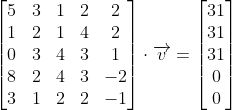New riddles.
Riddle 1:
I haven't solved this one, but it's easy to show that with n knights, you need at least (n-1)/2 arrangements to ensure everyone gets a handshake. The total number of handshakes needed is 1/2*n*(n-1) and the maximum number of unique handshakes per arrangement is n (everyone shakes the hand of the person to their left and to their right, which double-counts the number of handshakes). I'll try to see if there's a strategy to obtain this minimum number of arrangements.
Riddle 2:
This needs some careful interpretation. K is inserted somewhere within the integers 0 through 9, shifting some of the integers up. For example, if K = 3, then 0 remains 0, 1 remains 1, 2 remains 2, K takes the place of 3, 3 becomes 4, 4 becomes 5, and so on, up to 9 becoming 10. I solved this by converting one of the equations from a guess for base keleven to base 11, carefully solving them, and then converting the solution back to my guess for base keleven. One of my guesses worked.
Riddle 3:
This is the riddle I'm most interested in and I can't make any headway on it. Someone in the comments pointed out, "For Riddle 3, how does any strategy give a nonzero expected score? Am I missing something?" I'm in complete agreement. If my current score is S and the value of the current question is N, then by guessing, I can change my score to either S+N or S-N. If I skip the question, my score remains at S.
On the other hand, this reminds me a little of the
St. Petersburg lottery or maybe a
Martingale betting strategy, both of which give unexpected results. Could someone weigh in with either a different interpretation of the problem statement or a correction to my logic? In the meantime, I'll play around with tests that have just 2 or 3 questions, seeing if I can bring the expected value of your score up from 0. I think there would be some interesting math involved if, say, your score could not be less than 0 or you are attempting to outperform some percentage of other students taking the exam.
Riddle 4:
This riddle was straightforward with matrices. My first effort was to guess and check, but I cheated just a little with my calculator to find that the answers aren't integers. Then I cheated entirely to see that the answers are horrendous. I highly recommend setting up the matrix and just solving it computationally. The determinant is a two-digit prime number, the numerators of the variables are two- and three-digit numbers, and the numerators of the values under the question marks are four digit numbers...
... with just one exception. The question mark corresponding to the fifth row is 31. I'm trying to figure out exactly why; it should be some simple linear combination of the other five equations. I gave it one good effort but I think my analysis is off. I'll attempt it again. It turns out there's one free variable, so you need to use an augmented matrix and put it in reduced row-echelon form.
Edit: I found my error in riddle 4. My reduced row-echelon form was correct, I just made a small math error when plugging in values. We have a free parameter because
the value of candy corn is zero. Our equations in matrix form are:

(The order of the variables here is acorns, candy corn, apples, leaves, pumpkins.)
The equation corresponding to the fifth row is:

This equation is necessarily a linear combination of the other five equations, which are linearly independent. Our augmented matrix is then:

In reduced row-echelon form, this becomes:

Taking the variables to be A, B, C, D, and E, where E is our free parameter, this tells us:

So notice that A = -B and C=1. Since the right hand side of the equations corresponding to A, B, and C are all 31 and the right hand side of the remaining equations is zero, this proves that the right hand side of equation from the fifth row is 31.
And of course this remains true when we demand that the coefficient of candy corn match up.








 However, f(x)'s limit at 0 is not two sided. But I bet you can find an example where all limits are two sided armed with this method. (There's a simple example very close in form to the example I gave.)
However, f(x)'s limit at 0 is not two sided. But I bet you can find an example where all limits are two sided armed with this method. (There's a simple example very close in form to the example I gave.) Riddler Classic
This seems relatively easy, just split it up into a bunch of semicircles.
Riddler Classic
This seems relatively easy, just split it up into a bunch of semicircles.
 Thus
A=A1+A2=(a1-a2+a3)+(a4-a5+a6)
=π/2 ( (10+2)2 - (10-2)2 + 22 ) + π/2 ( (5+2)2 - (5-2)2 + 22 )
=π/2 ( 122 - 82 + 22 + 72 - 32 + 22)
= π/2 (144-64+4+49-9+4) = π/2 (128) = 64π
Thus
A=A1+A2=(a1-a2+a3)+(a4-a5+a6)
=π/2 ( (10+2)2 - (10-2)2 + 22 ) + π/2 ( (5+2)2 - (5-2)2 + 22 )
=π/2 ( 122 - 82 + 22 + 72 - 32 + 22)
= π/2 (144-64+4+49-9+4) = π/2 (128) = 64π